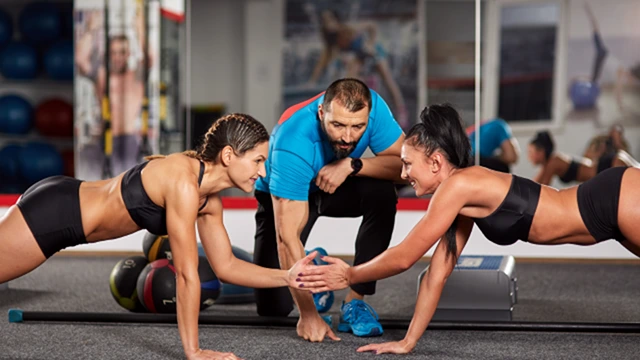How to Improve Your Flexibility and Strength with Calisthenics

Calisthenics is a form of exercise that utilizes bodyweight movements to improve strength, flexibility, and overall fitness. Unlike traditional weightlifting, calisthenics focuses on using your own body as resistance, making it accessible to individuals of all fitness levels. Whether you're a beginner or an experienced fitness enthusiast, incorporating calisthenics into your routine can help you enhance both flexibility and strength. Here are some tips to improve your flexibility and strength with calisthenics:
1. Incorporate Dynamic Stretching: Prior to starting your calisthenics workout, perform dynamic stretching exercises to warm up and increase your range of motion. Dynamic stretches involve continuous movements that mimic the exercises you'll be performing. Examples include leg swings, arm circles, walking lunges, and hip rotations. Dynamic stretching helps prepare your muscles and joints for the movements involved in calisthenics.
2. Focus on Full-Body Exercises: Calisthenics is known for its emphasis on compound movements that engage multiple muscle groups simultaneously. These exercises not only build strength but also improve flexibility. Include exercises like push-ups, pull-ups, squats, lunges, planks, and burpees in your routine. These full-body exercises promote functional strength and enhance flexibility by requiring your body to move in various planes of motion.
3. Practice Isometric Holds: Isometric holds involve holding a specific position without any movement. These static exercises target both strength and flexibility. For example, include exercises like the plank, hollow hold, wall sit, and L-sit in your routine. Isometric holds challenge your muscles to maintain tension and stability, improving both strength and flexibility in the targeted muscle groups.
4. Incorporate Mobility Exercises: Mobility exercises focus on improving joint mobility and range of motion. Include exercises like shoulder dislocates, wrist mobility drills, hip openers, and spinal twists in your warm-up or cool-down routine. Mobility exercises enhance flexibility and help prevent injury by promoting healthy joint movement.
5. Use Progressions and Variations: As you become more comfortable with calisthenics, progress your exercises to increase both strength and flexibility. Start with basic variations and gradually progress to more challenging movements. For example, progress from standard push-ups to decline push-ups or from regular squats to pistol squats. Adjust the difficulty level of exercises to continuously challenge your muscles and improve flexibility.
6. Incorporate Stretching at the End: After your calisthenics workout, include static stretching exercises to cool down and further improve flexibility. Focus on stretching the major muscle groups used during your workout, such as hamstrings, quadriceps, chest, shoulders, and hips. Hold each stretch for 15 to 30 seconds, and remember to breathe deeply and relax into each stretch.
7. Practice Consistently: Consistency is key to improving flexibility and strength with calisthenics. Make calisthenics a regular part of your fitness routine and dedicate specific training sessions to focus on flexibility. By consistently practicing calisthenics exercises and incorporating flexibility-focused workouts, you'll gradually enhance your range of motion and increase both strength and flexibility.
Conclusion:
Calisthenics provides a versatile and effective way to improve both flexibility and strength. By incorporating dynamic stretching, full-body exercises, isometric holds, mobility exercises, progressions and variations, post-workout stretching, and practicing consistently, you can make significant progress in your flexibility and strength journey. Remember to listen to your body, focus on proper form, and gradually progress as your fitness level improves. Embrace calisthenics as a holistic approach to fitness that enhances both your physical capabilities and overall well-being.
Recent Articles
In today's fast-paced world, time is a valuable commodity. NeoFitHub understands the importance of efficiency and is here to revolutionize your fitness journey. Say goodbye to long... continue
Ready to transform your fitness journey and unleash your true potential? NeoFitHub invites you to embark on a transformative experience with personalized coaching that takes you be... continue
Are you ready to unlock the full potential of your health and fitness goals? NeoFitHub welcomes you to a world of boundless possibilities with online coaching platforms. No longer ... continue

